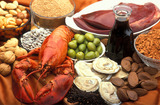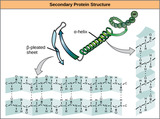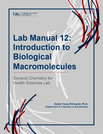
13 Results


Biology is designed for multi-semester biology courses for science majors. It is grounded on an evolutionary basis and includes exciting features that highlight careers in the biological sciences and everyday applications of the concepts at hand. To meet the needs of today’s instructors and students, some content has been strategically condensed while maintaining the overall scope and coverage of traditional texts for this course. Instructors can customize the book, adapting it to the approach that works best in their classroom. Biology also includes an innovative art program that incorporates critical thinking and clicker questions to help students understand—and apply—key concepts.
- Subject:
- Biology
- Life Science
- Material Type:
- Full Course
- Provider:
- Rice University
- Provider Set:
- OpenStax College
- Date Added:
- 08/22/2012

- Subject:
- Biology
- Life Science
- Material Type:
- Unit of Study
- Provider:
- Rice University
- Provider Set:
- OpenStax College

- Subject:
- Applied Science
- Biology
- Life Science
- Material Type:
- Module
- Date Added:
- 07/10/2017

By the end of this section, you will be able to:Explain why an animal’s diet should be balanced and meet the needs of the bodyDefine the primary components of foodDescribe the essential nutrients required for cellular function that cannot be synthesized by the animal bodyExplain how energy is produced through diet and digestionDescribe how excess carbohydrates and energy are stored in the body
- Subject:
- Applied Science
- Biology
- Life Science
- Material Type:
- Module
- Date Added:
- 07/10/2017

- Subject:
- Biology
- Life Science
- Material Type:
- Unit of Study
- Provider:
- Rice University
- Provider Set:
- OpenStax College

- Subject:
- Applied Science
- Biology
- Life Science
- Material Type:
- Module
- Date Added:
- 07/10/2017

By the end of this section, you will be able to:Describe the functions proteins perform in the cell and in tissuesDiscuss the relationship between amino acids and proteinsExplain the four levels of protein organizationDescribe the ways in which protein shape and function are linked
- Subject:
- Applied Science
- Biology
- Life Science
- Material Type:
- Module
- Date Added:
- 07/10/2017

This module provides an introdcution to the concepts of fats and proteins. The basic chemical structure of fats as triglycerides is reviewed, and an introduction to protein structure, including the peptide bond is given.
- Subject:
- Astronomy
- Chemistry
- Education
- Mathematics
- Physical Science
- Space Science
- Material Type:
- Interactive
- Unit of Study
- Provider:
- UCAR Staff
- Provider Set:
- Visionlearning
- Author:
- Anthony Carpi
- Date Added:
- 03/27/2003

This work consists of original content and adapted OpenStax content. Each image is attributed with the source page in the figure description, in accordance to each respective license. OpenStax content has been remixed into the “Theory and Background” and “Relations to Health Sciences” sections of this work. OpenStax remixing consists of rearrangement, minor instructional design augmentations, and minor phrasing edits. All other sections within this work are originally created content.

This resource is a video abstract of a research paper created by Research Square on behalf of its authors. It provides a synopsis that's easy to understand, and can be used to introduce the topics it covers to students, researchers, and the general public. The video's transcript is also provided in full, with a portion provided below for preview:
"A plant’s microbiome is made up of all the microorganisms living on or in its tissues and can drive numerous aspects of its health and development. Scientists think it could be possible to harness these microbial communities to maximize crop health and productivity. To explore this possibility, a team of researchers examined the effects of glutamic acid, an important amino acid naturally produced by plants, on their microbiomes. Applying glutamic acid at 2-week intervals drastically altered the microbiome composition of strawberry and tomato plants, notably increasing the abundance of _Streptomyces globisporus_ SP6C4, a key microbe known to negatively affect pathogens that attack these species. This increase in _Streptomyces globisporus_ SP6C4 was also associated with reductions in diseases of both the leaves and roots, including gray mold and Fusarium wilt..."
The rest of the transcript, along with a link to the research itself, is available on the resource itself.
- Subject:
- Biology
- Life Science
- Material Type:
- Diagram/Illustration
- Reading
- Provider:
- Research Square
- Provider Set:
- Video Bytes
- Date Added:
- 05/17/2022

This resource is a video abstract of a research paper created by Research Square on behalf of its authors. It provides a synopsis that's easy to understand, and can be used to introduce the topics it covers to students, researchers, and the general public. The video's transcript is also provided in full, with a portion provided below for preview:
"Long non-coding RNAs (lncRNAs) regulate the transcription, translation, and post-translational modification of target genes and have been a recent target of interest in cancer research for their roles in regulating amino acid metabolism. Cancer cells undergo significant metabolic reprogramming and depend on amino acids as key nutrients. This reprogramming is a critical part of tumorigenesis and cancer progression. Thus, finding ways to measure or target metabolic reprogramming may lead to new diagnostics and treatment methods. Research has demonstrated that lncRNAs participate in the reprogramming of amino acid metabolism in cancer cells. However, there are still significant gaps in the literature. Namely, the secondary structures, functions, and molecular mechanisms of lncRNA action are not fully understood, and systemic studies on the function of lncRNAs in tumor amino acid metabolism are still needed. Further, current studies have a long way to go before reaching the clinical stage..."
The rest of the transcript, along with a link to the research itself, is available on the resource itself.
- Subject:
- Biology
- Life Science
- Material Type:
- Diagram/Illustration
- Reading
- Provider:
- Research Square
- Provider Set:
- Video Bytes
- Date Added:
- 05/08/2023

This course, intended for both graduate and upper level undergraduate students, will focus on understanding of the basic molecular structural principles of biological materials. It will address the molecular structures of various materials of biological origin, such as several types of collagen, silk, spider silk, wool, hair, bones, shells, protein adhesives, GFP, and self-assembling peptides. It will also address molecular design of new biological materials applying the molecular structural principles. The long-term goal of this course is to teach molecular design of new biological materials for a broad range of applications. A brief history of biological materials and its future perspective as well as its impact to the society will also be discussed. Several experts will be invited to give guest lectures.
- Subject:
- Applied Science
- Biology
- Engineering
- Life Science
- Material Type:
- Full Course
- Provider Set:
- MIT OpenCourseWare
- Author:
- Zhang, Shuguang
- Date Added:
- 09/01/2005